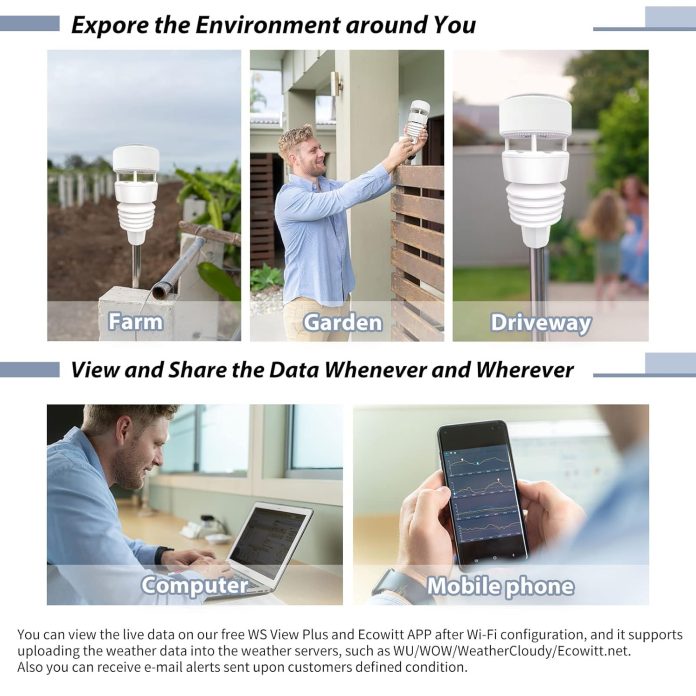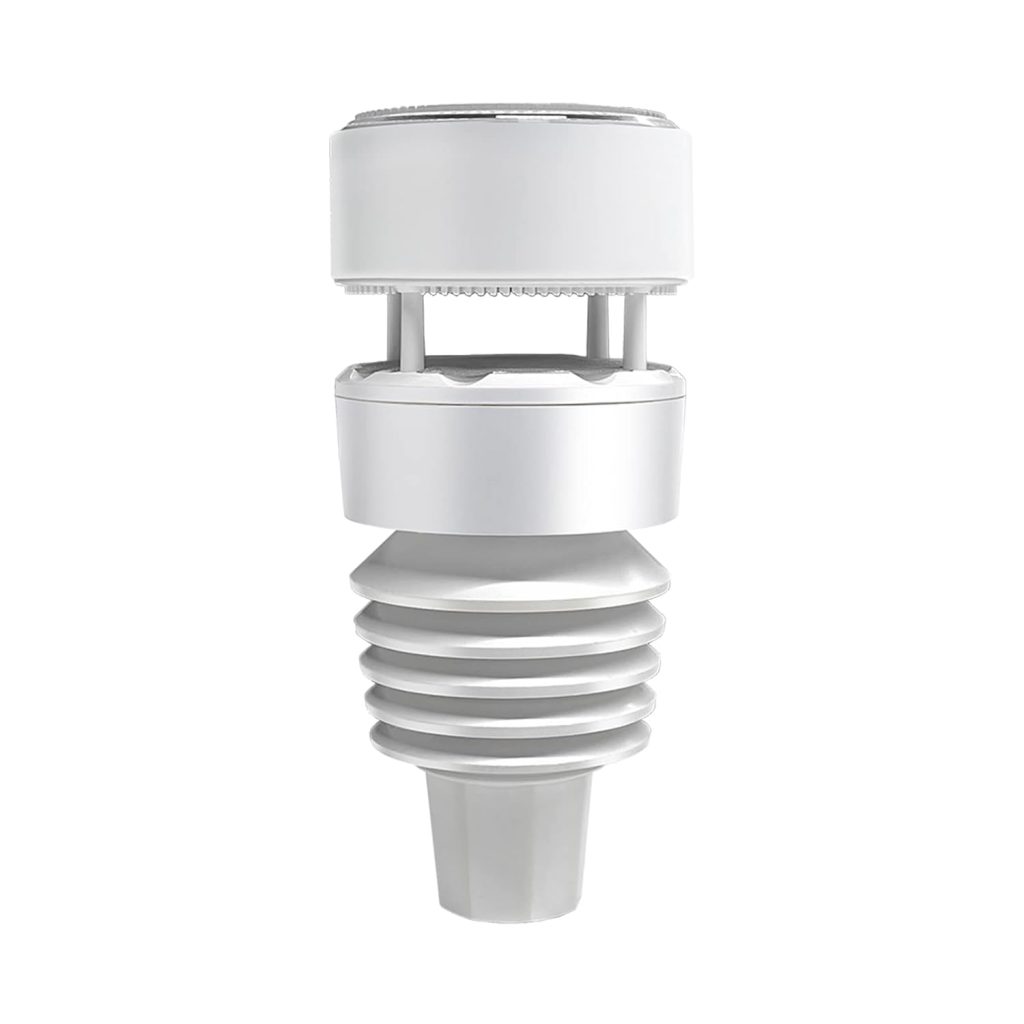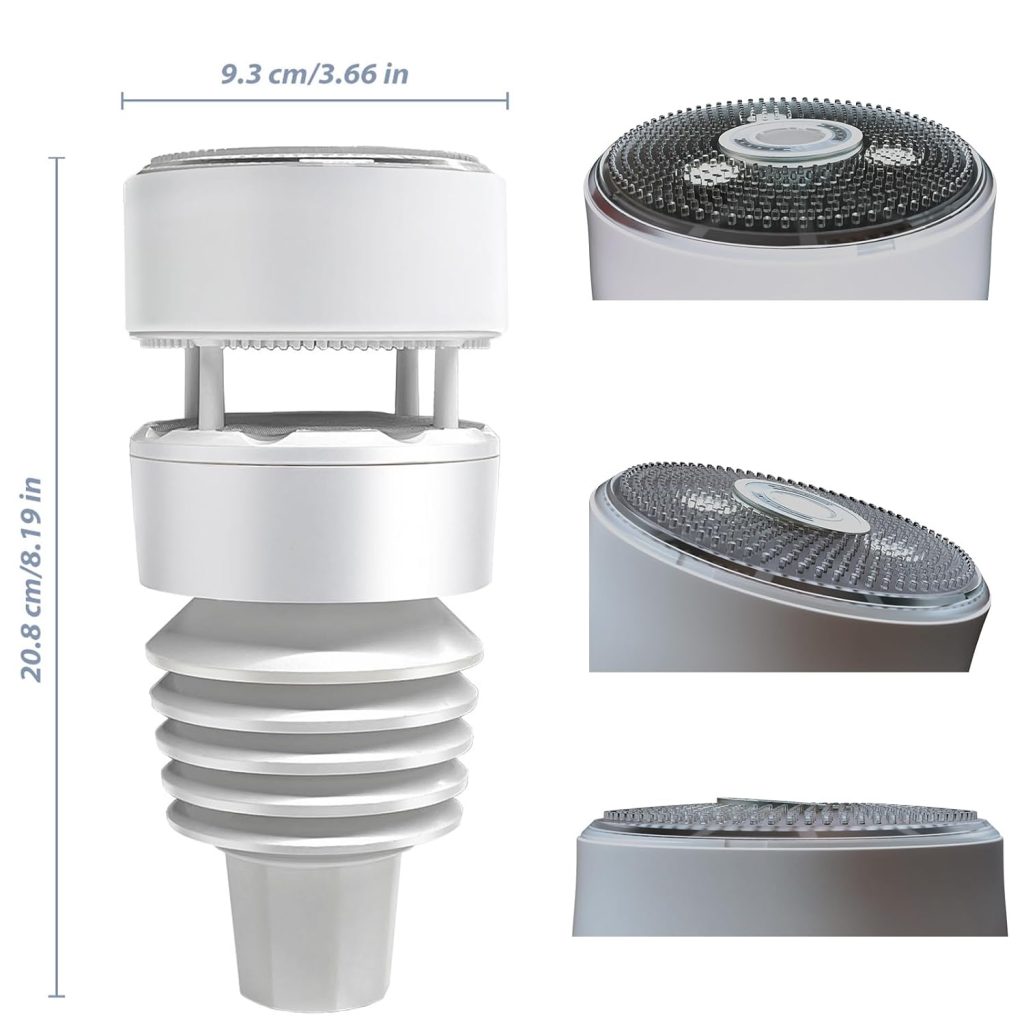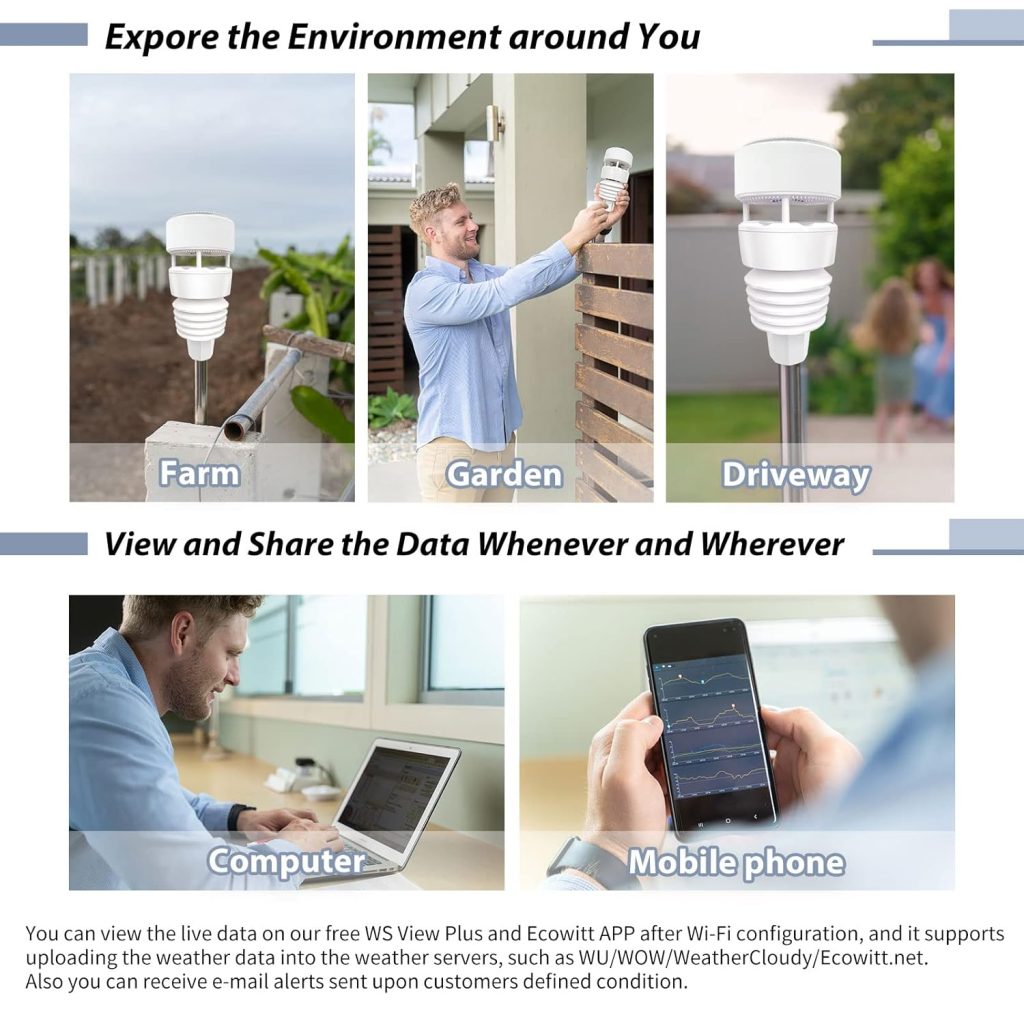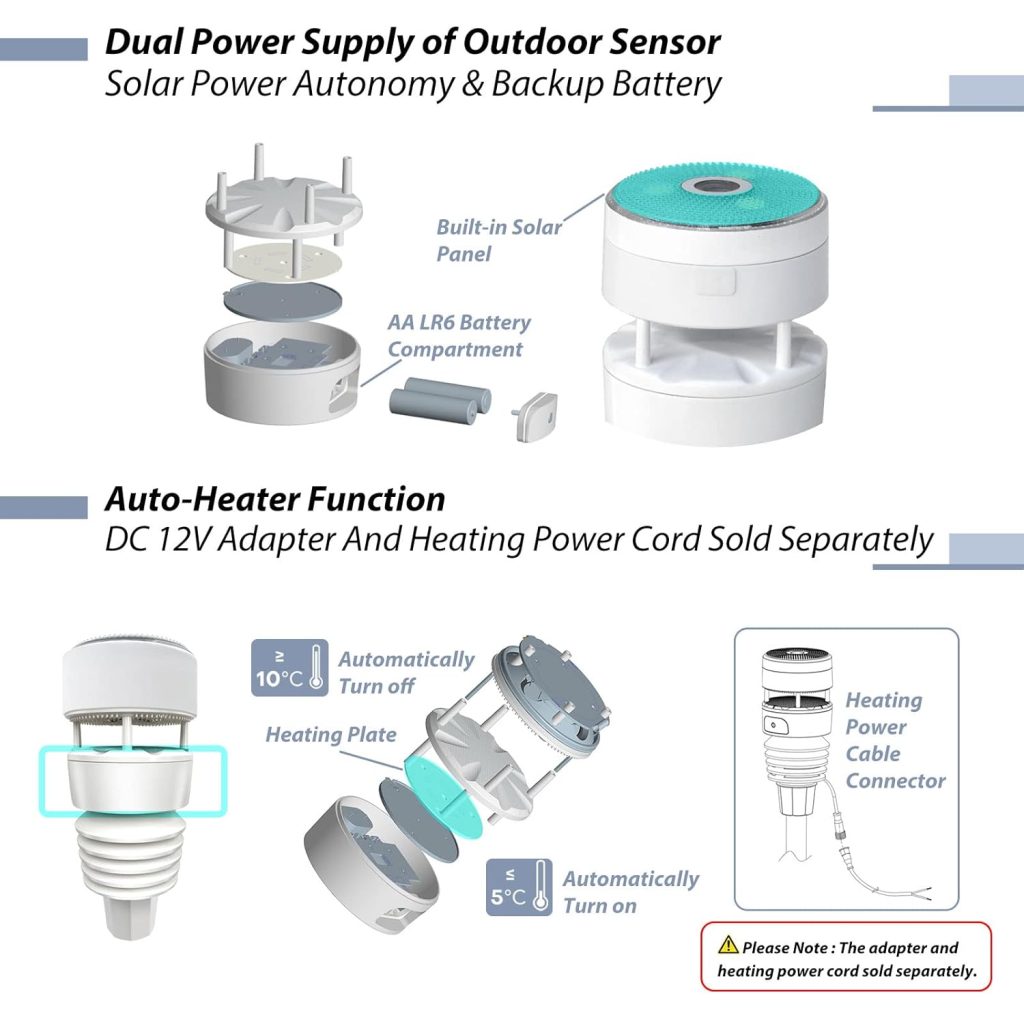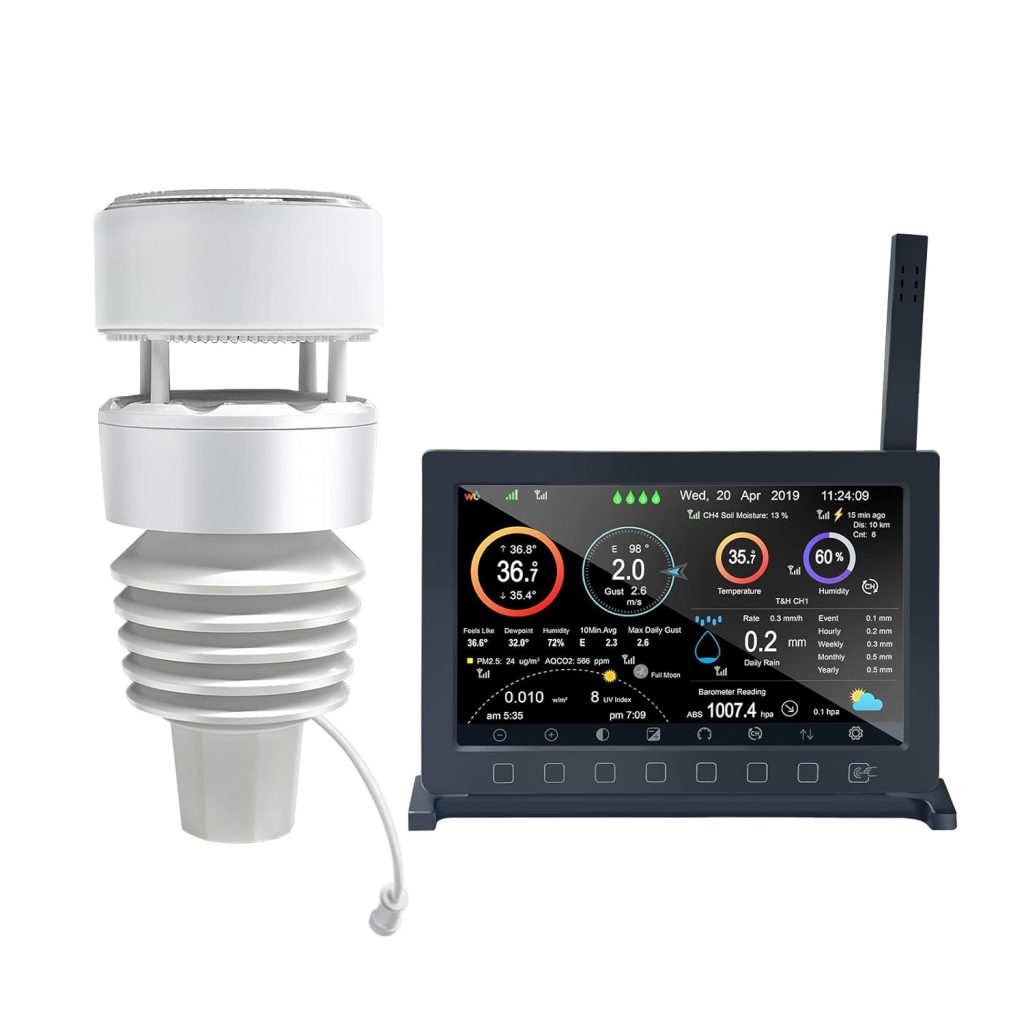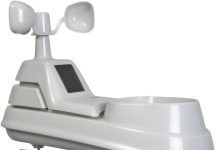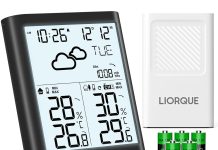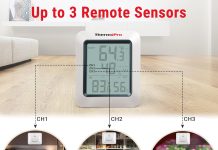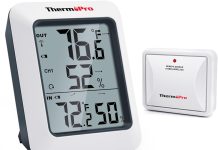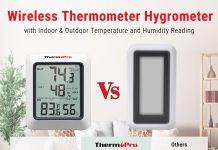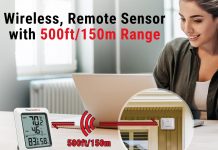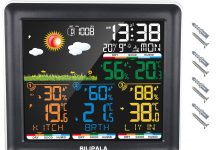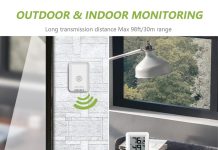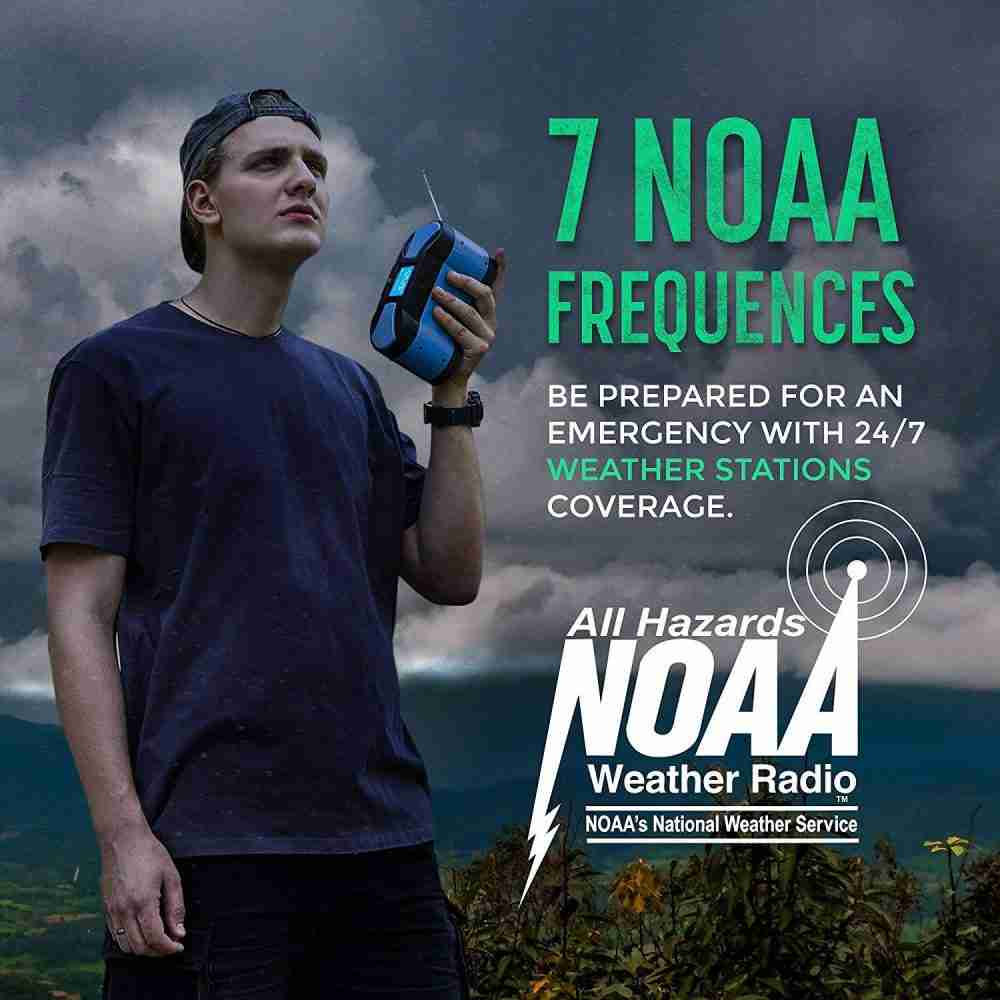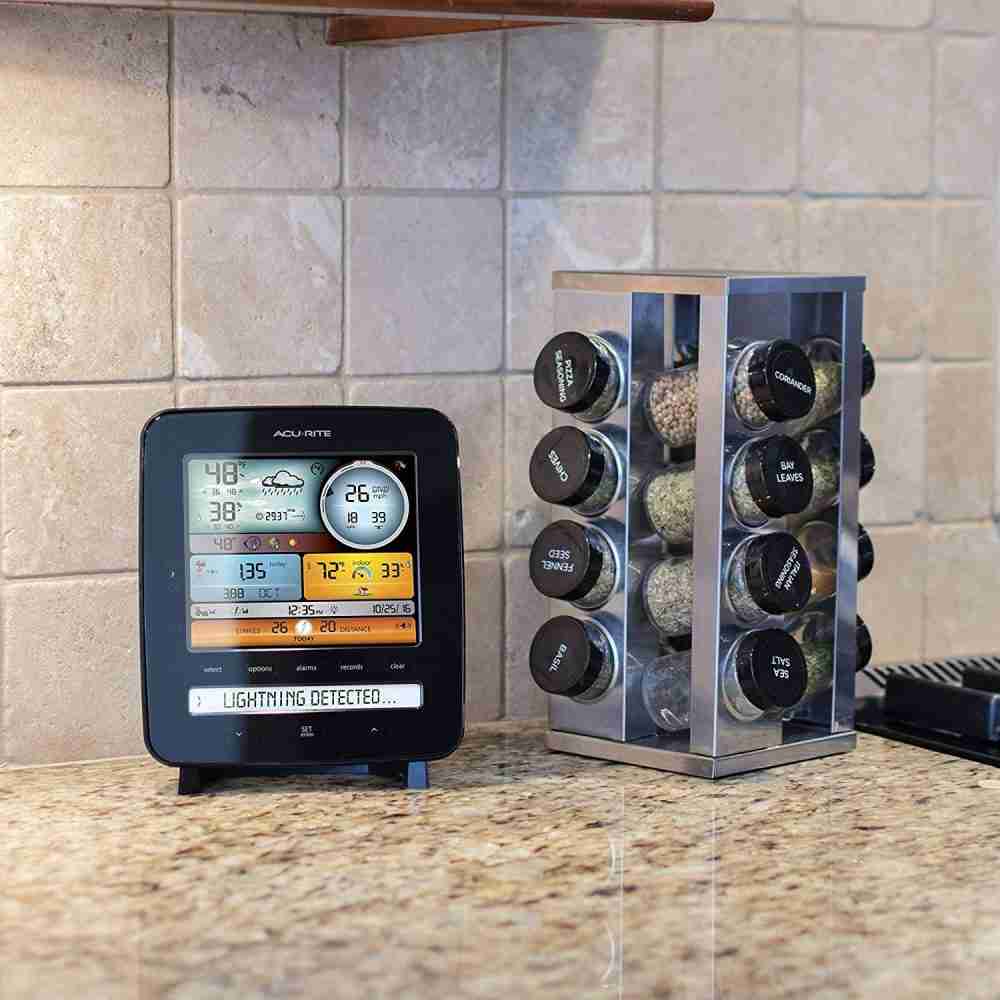? Are we ready to find out whether the Ecowitt WS90 7-in-1 Weather Sensor fits our backyard monitoring needs and network setup?
First Impressions
We find the Ecowitt WS90 7-in-1 Weather Sensor visually compact and thoughtfully engineered for outdoor use. Right away it feels like a device designed to sit on a mast for years — the housing looks rugged, the solar cell on top signals low-maintenance operation, and the modular sensor array promises a lot of data without taking up much space.
Ecowitt WS90 7-in-1 Weather Sensor, Outdoor Temperature/Humidity/Rain Gauge/Wind Speed and Direction/UV Index/Solar Radiation - Just Sensor, Could NOT Be Used Alone - 915 MHz
Product Overview
The full product name is Ecowitt WS90 7-in-1 Weather Sensor, Outdoor Temperature/Humidity/Rain Gauge/Wind Speed and Direction/UV Index/Solar Radiation – Just Sensor, Could NOT Be Used Alone – 915 MHz, and that tells us most of what we need to know upfront: it’s a multi-parameter outdoor sensor that cannot operate independently. We should pair it with an Ecowitt-compatible gateway, hub, or console (sold separately) to receive live readings, upload data to internet services, and configure alerts.
Key Features
We like that the WS90 bundles seven measurements into one weather-proof package: temperature, humidity, wind speed, wind direction, rainfall (via a haptic sensor), UV index, and solar radiation. It communicates at 915 MHz, supports long transmission ranges, uses a built-in solar panel plus backup batteries, and is IPX5-rated for weather resistance.
Haptic Rain Sensor
The WS90 replaces a traditional tipping bucket with a haptic rainfall sensor at the top, designed to measure rainfall without moving parts that can jam or wear. In practice, that means fewer mechanical failures in freezing or debris-prone environments and generally steadier long-term performance, though there are caveats about single-event accuracy we discuss later.
Temperature & Humidity
Temperature and humidity sensors are housed in a thermally insulated enclosure to prevent direct solar heating and to improve the fidelity of readings. We find these sensors respond quickly to changing conditions and are typical of mid-range consumer-grade meteorological devices: very usable for hobby meteorology, garden management, and home automation.
Wind Speed & Direction
The wind sensors measure both speed and direction and send a full picture of local wind behavior. Installation stability matters for accurate wind direction, so we recommend a solid mast and careful mounting to reduce turbulence caused by nearby structures.
UV Index & Solar Radiation
The built-in sensors for UV index and solar radiation broaden the WS90’s utility for gardeners, solar installers, and health-conscious outdoor enthusiasts. These values are handy for understanding sun exposure trends and for basic calculations about photovoltaic output under real local conditions.
Power, Battery & Build
A small solar panel on top charges internal batteries so the sensor can remain powered through periods of low sun. The body uses thermal insulation materials and is rated IPX5 for water resistance; that won’t stop immersion but will handle heavy rain and splashes reliably.
Connectivity & Compatibility
The WS90 transmits over 915 MHz RF and is designed to pair with Ecowitt-developed gateways and consoles, including the Wittboy GW2000 Wi-Fi hub and others in Ecowitt’s ecosystem. It cannot be used as a standalone unit — without a gateway or console we cannot access or upload the sensor data.
Specification Table
We use this table to summarize the main technical details so we can quickly check the essentials before purchasing or mounting.
| Feature | Specification | Notes |
|---|---|---|
| Sensor Type | 7-in-1 (T/H, Wind Speed, Wind Direction, Rain, UV, Solar Radiation) | Integrated package |
| Rain Sensor | Haptic rainfall sensor | No tipping bucket; claims better durability |
| Power | Built-in solar panel + backup batteries | Solar extends battery life; batteries included for backup |
| Transmission Frequency | 915 MHz | Regional frequency; check local regulations if unsure |
| Transmission Range | Up to 150 m (500 ft) with obstacles; 300 m (1,000 ft) open | Actual range depends on site and antenna placement |
| Weatherproof Rating | IPX5 | Water jets; not fully submersible |
| Mounting | 1″ mounting tube (not included) | Standard mast compatibility |
| Compatibility | Wittboy GW2000, GW1100, HP2550/HP2560, WN1920/1980, WN1820/1821, etc. | Requires hub/console for Wi-Fi and internet upload |
| Cloud Upload | Ecowitt Weather, Wunderground, Weather Cloud, WOW, custom | Custom uploads supported if protocol-compatible |
| Alerts | Email alerts via supported hubs | Dependent on gateway features |
| Weight / Dimensions | Compact design | Lightweight; see manufacturer for exact dims |
| Use Case | Outdoor residential, gardens, hobby meteorology | Not a professional-grade weather station |
Installation & Mounting
We appreciate that the WS90 is designed for a standard 1″ mounting tube and base (not included), which makes it compatible with most small weather station masts and tripods. Because wind and rain measurements are sensitive to placement, we recommend mounting on a dedicated mast away from obstructions, ideally above any roofline or tall vegetation.
Step-by-Step Setup Overview
We suggest the following steps for getting started: mount the sensor on a 1″ mast, ensure the solar panel faces general daylight (not necessarily south in the northern hemisphere, but unshaded), install backup batteries, pair with the chosen gateway or console following the Ecowitt pairing procedure, and then complete Wi-Fi configuration. After pairing, verify readings on the Ecowitt app or web portal and adjust sensor height or placement if values look suspect.
Placement Tips
For the most reliable wind readings place the unit at least 10 m (about 33 ft) from tall buildings or trees when possible, or follow the local standard for wind measurement height relevant to your use case. For temperature and humidity, avoid direct sunlight and reflective surfaces; shade and adequate ventilation around the sensor are essential to reduce solar heating bias.
Performance & Accuracy
We find the WS90 generally performs well for consumer and prosumer applications, giving consistent readings across its measured parameters. Some variables, especially rainfall per-event measurement, show larger variation compared to laboratory-grade instruments, but long-term aggregated totals align closely with reference devices.
Rain Accuracy & Limitations
The haptic rain sensor is a strong selling point because it reduces mechanical wear and susceptibility to clogging, but the device documentation notes possible per-event deviation influenced by raindrop size and wind. We should expect small daily deviations over long-term use; for gardeners or hobby meteorologists this is usually acceptable, but those requiring highly precise per-storm totals should consider pairing with a dedicated tipping-bucket WH40 unit.
Wind Accuracy
Wind speed and direction are accurate when the sensor is mounted on a stable mast with minimal nearby obstructions. Wind measurements will be compromised by turbulence from roofs, poles, or trees, so placement and mount rigidity will significantly affect the quality of the data we receive.
Temperature & Humidity Accuracy
Temperature and humidity are reliable within the typical tolerances for consumer-grade sensors and perform well for monitoring microclimates around gardens, patios, and small properties. For high-precision scientific work we might opt for calibrated reference sensors, but for most residential and hobby applications the WS90 is more than adequate.
Data Handling & Online Services
Once paired to a compatible Wi-Fi hub or console, the WS90 can upload its data to various weather services such as Ecowitt Weather, Weather Underground, Weather Cloud, and the Weather Observation Website (WOW). We like that Ecowitt offers a free server (ecowitt.net) for views of graphs and history and that the device supports custom server uploads if the remote endpoint uses the same protocol as Weather Underground or Ecowitt.
Graphs, History & Alerts
When our WS90 is connected to the Ecowitt ecosystem, we can view time-series graphs, download historical CSV data, and set email alerts for thresholds like high wind or freezing temperatures. This capability turns the sensor into a useful monitoring node for remote alerts — handy if we manage a property or garden and want automated notifications rather than constant checking.
Supported Gateways & Consoles
Compatibility includes Wittboy GW2000, GW1100 Wi-Fi gateway, HP2550/HP2560 consoles, WN1920/1980, WN1820/1821, and other Ecowitt-developed or future consoles. We should plan to purchase a compatible hub or console unless we already own one, because the WS90 will not operate or upload data by itself.
Setup Experience: What to Expect
We found the initial pairing and Wi-Fi configuration are straightforward provided we follow the instructions and use a compatible gateway. There can be hiccups if the sensor is out of RF range or if the chosen gateway firmware is outdated; updating the gateway firmware before pairing is a good practice.
Troubleshooting Common Pairing Issues
If the gateway fails to detect the WS90, we recommend checking the RF range, ensuring batteries are seated properly, confirming the gateway is in listening mode, and restarting both devices. If problems persist, moving the sensor or gateway a little closer during the initial pairing often resolves issues caused by marginal signal strength.
Build Quality & Durability
In real-world use the WS90 feels solid and purpose-built for outdoor exposure, and the IPX5 rating means it stands up to jets of water and sustained rain. The thermal insulation and material choices help minimize rapid temperature swings caused by direct solar exposure, improving data fidelity.
Long-Term Reliability Expectations
Given the lack of moving parts for the rain sensor and the solar-assisted power system, we expect the device to remain operational with minimal intervention for multiple seasons. The main wear points would be the solar panel, battery life and any physical mounts; periodic inspection and battery replacement as needed will keep the unit functional.
Pros & Cons
We list the main advantages and limitations we observed so we can weigh the device against our needs.
Pros:
- Compact 7-in-1 sensor reduces the need for multiple instruments.
- Haptic rain sensor minimizes mechanical failure risks.
- Solar plus backup battery allows long-term outdoor operation with low maintenance.
- Broad compatibility with Ecowitt gateways and popular weather services.
- IPX5 weather resistance suitable for most outdoor installations.
Cons:
- Cannot be used alone — requires separate gateway/console purchase.
- Rainfall per-event accuracy can vary based on raindrop size and wind; not the best for precision hydrology.
- RF frequency 915 MHz may not be ideal or legal in all regions (check local regulations).
- Mounting hardware (1″ tube and base) is not included.
Comparison with Similar Devices
Compared to a dedicated tipping-bucket rain gauge plus separate anemometer, the WS90 offers a simpler footprint and integrated data stream, which is more convenient for hobbyists and general monitoring. If precise per-storm rainfall measurement is critical, a traditional WH40 tipping-bucket rain gauge may outperform it for single-event accuracy, but it will have more mechanical parts to maintain.
How WS90 Fits Different Budgets
For budget-conscious buyers looking for consolidated functionality, the WS90 provides good value because it merges multiple sensors into one. For those with advanced needs — scientific studies, research-grade accuracy, or regulatory compliance — a higher-end modular system with independently calibrated sensors will be more appropriate.
Who Should Buy It?
We recommend the WS90 to hobby meteorologists, gardeners, small-scale solar project owners, and homeowners who want reliable, low-maintenance monitoring of multiple environmental parameters. It’s also a solid choice for people who want automated uploads to online platforms and email alerts without assembling multiple separate sensors.
Who Should Avoid It
We advise against purchasing the WS90 if our primary need is laboratory-grade rainfall accuracy or if we do not want to purchase a separate gateway/console, since the sensor cannot function by itself. Also, check regional RF regulations if 915 MHz is restricted where we live.
Maintenance & Care
Maintenance is straightforward: keep the solar panel clear of debris, replace backup batteries when low, and periodically check that mounting hardware remains tight and free of corrosion. Cleaning the rain sensor and solar surface every few months — or after heavy pollen, dust, or snow events — will help maintain good performance.
Seasonal Care Tips
In winter climates, ensure that the sensor is mounted where ice and snow are unlikely to cause damage or block key sensors. While the haptic rain sensor is less prone to clogging, heavy icing or prolonged snow cover can still affect readings; clearing snow and ice when safe to do so will restore normal function.
Integration with Home Automation & Third-Party Platforms
Once the WS90 is connected to a compatible Wi-Fi gateway, our data can feed into a range of online services and home automation platforms that accept Weather Underground or Ecowitt protocol data. This makes it possible to display readings on smart dashboards, trigger automations based on thresholds (for example, closing shades during high UV events), and log long-term environmental trends.
Custom Uploads and API Options
If we run our own server and it supports the Ecowitt/Wunderground API, we can point the gateway at our custom endpoint and collect raw data there. That flexibility is great for hobbyists who like to run private dashboards or integrate weather data with additional sensors or camera feeds.
Cost Considerations
The WS90 itself is positioned as a mid-range sensor in terms of price, but we should account for the additional cost of a compatible gateway or console. When planning a budget, include any masts, mounting hardware, and possibly a more robust gateway if we intend to upload data or integrate with smart home systems.
Long-Term Value
Given the integrated nature of the WS90 and its solar-assisted power, the long-term operating costs are relatively low: occasional battery replacements and minimal mechanical servicing. The convenience of one device measuring multiple parameters adds ongoing value, especially when we factor in the time saved versus maintaining several discrete instruments.
Real-World Use Cases
We find this sensor particularly useful for:
- Gardeners tracking microclimate conditions and watering needs.
- Smallholder poultry or livestock keepers monitoring temperature and wind.
- Homeowners who want UV and solar radiation insight for outdoor activities.
- Amateur weather station operators uploading to community networks like Weather Underground.
Examples of Practical Applications
For instance, we can set email alerts for frost risk based on temperature trends, use UV index data to plan safe outdoor work, or monitor solar radiation trends to estimate PV panel performance under local conditions. The integrated wind data helps with decisions like securing outdoor equipment before high winds.
Troubleshooting Common Issues
If readings appear erratic, first check the mounting stability and proximity to obstructions. For connectivity problems, ensure the gateway is compatible and within RF range, and update firmware on any gateway or console before attempting pairing.
When to Contact Support
If after reasonable troubleshooting the sensor still fails to transmit, provides obviously wrong values, or shows a persistent hardware error, contact Ecowitt support with serial numbers and setup details. Hardware faults can occur, and manufacturers typically guide warranty repairs or replacements when needed.
Frequently Asked Questions (FAQ)
We answer common questions we expect people to have about the WS90 and practical usage.
Q: Can the WS90 operate on its own without a gateway? A: No. The WS90 is a sensor-only unit and must be paired with a compatible Ecowitt gateway, hub, or console to view or upload data.
Q: How accurate is the rain measurement? A: Rain totals over longer periods tend to be accurate, but individual storm measurements may deviate due to raindrop size, wind, and other environmental factors. For critical per-event accuracy, pairing with a WH40 tipping-bucket gauge is recommended.
Q: Is 915 MHz a problem for us? A: That depends on our country — 915 MHz is common in some regions but restricted in others. Check local radio regulations before purchase or ensure the gateway supports a legal alternative frequency.
Q: How often does the device transmit data? A: Transmission intervals are determined by the paired gateway or console configuration; typical setups transmit at 1 to 10 minute intervals, but this can often be adjusted in the hub settings.
Q: Can we use the data in our home automation platform? A: Yes, once the WS90 is connected to a compatible gateway and that gateway supports integration or custom uploads. Ecowitt and Weather Underground compatibility opens many pathways for integration.
Alternatives to Consider
If we need higher rainfall precision, the WH40 tipping-bucket rain gauge is a good supplement to consider alongside the WS90. For full-featured professional stations, brands like Davis Instruments still offer high-end, separately calibrated sensors with rugged mechanical tipping buckets and robust anemometry, although at a higher price and with more physical footprint.
Final Verdict
We find the Ecowitt WS90 7-in-1 Weather Sensor to be an excellent, compact option for anyone wanting a consolidated outdoor monitoring device with low maintenance needs and broad online integration. Its major caveat is the need for a separate gateway/console and some limitation on per-storm rain accuracy, but for most home and hobby uses it represents strong value and practical functionality.
Quick Buying Checklist
We recommend we verify these points before we buy: confirm compatible gateway/console availability, check local RF regulations for 915 MHz, plan for a sturdy 1″ mast and mounting location, and decide whether additional rain gauge precision is necessary for our application. If these boxes are checked and we want a consolidated multi-sensor package, the WS90 is worth strong consideration.
Disclosure: As an Amazon Associate, I earn from qualifying purchases.

